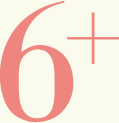Students of the Academy’s fashion department have become increasingly more international. The four-year curriculum at the Academy is an intense and, most of all, a labour-intensive study. Former students have repeatedly indicated that it is a training where you learn to discover yourself.
In the first year, 50 or 60 students are selected from a group of 150 candidates. They have to make a study of a skirt and dress and design an experimental costume. The students in the second year choose a particular costume from a specific period in costume history to make a replica of the costume and design a collection of 5 silhouettes. In the third year, a similar assignment is carried out with an ethnic costume, followed by a small collection of 8 silhouettes. In the fourth and last year the students work on a full final collection consisting of 12 silhouettes.
In 1981, with the graduation show by ‘Antwerp Six’, the event was moved from a small-scale fashion show held in the cafeteria to the Academy’s ‘Lange Zaal’ and consequently also literally took a more important place in the Academy calendar. As of 2003, the event has expanded to the ‘Waagnatie’ into a three-day event with more than 6,000 visitors and extensive attention from the world’s press, buyers and manufacturers. This section introduces some pieces which were shown at the 2008 show. Their future brand could be well-known in Japan in the near future.
With work by the students of the Fashion Department: Jinseng Lee, Karisia Paponi, Antonin Tron, Tugce Ö zocak, Ken Combrez, Marianne Host, Emilie Pierlot, Lion Blau, Senne Huveneers, Alexandra Verschueren, Charlotte Pringels, Laurence Bruyninckx.
 |
1. Antwerp Academy, fashion show in the Long Room, 1980s (photographer unknown) 2. Poster Academy fashion show 1991 in Paris, graphic design: Paul Boudens (Photo: Ronald Stoops) 3. Antwerp Academy, fashion department, 3rd year, 1977, student unknown (Photo: MoMu Archives) |
One initiative that must not be underestimated was the ‘Textile Plan’, a five-year plan begun in 1981, intended to generate new incentives for the floundering Belgian textile industry. On the other hand, an annual competition for young designers, The Golden Spindle, was initiated. With financial support from the Belgian government, the collections were produced by the Belgian textile industries and manufacturers. In this way, participants were given the opportunity to work at a professional level. Even more importantly, it meant a gradual increase in confidence on the part of manufacturers in our own designers.
An important turning-point is the group defile of ‘The Antwerp Six’ - a name given by the British press - at the British Designer Show in 1988 in London. Some years later the big breakthrough follows when Martin Margiela and ‘The Six’ organise defiles in Paris - no longer as a group, but using their own names - causing them to get international media attention for their collections.
With work by Ann Demeulemeester, Maison Martin Margiela, Dries Van Noten, Marina Yee, Dirk Bikkembergs, Dirk Van Saene, Walter Van Beirendonck.

1.
Ann Demeulemeester, 1989 (Photo: Patrick Robyn)
2.
6+. Antwerp Fashion in the Flemish Parliament (Brussels) 25/01/07-23/06/07 (Photo: Pat Verbruggen)
3.
6+. Antwerp Fashion in the Flemish Parliament (Brussels) 25/01/07-23/06/07 (Photo: Pat Verbruggen)
Paradoxically, it is Raf Simons, a designer who did not study at the Academy, who will be the trendsetter of the second wave of successful Antwerp fashion. Because of their determination, strong and conceptual collections, the second generation featuring amongst others Jurgi Persoons, Lieve Van Gorp, A.F. Vandevorst, Veronique Branquinho, Patrick Van Ommeslaeghe, Bruno Pieters, Haider Ackermann, Bernhard Willhelm and Kris Van Assche immediately attain their breakthrough and they continue the avant-garde character of Antwerp fashion.
Their work, which at the end of the 1980s was considered to be avant-garde, has in the meantime evolved to generally accepted aesthetics. Some designers successfully established their own fashion houses, others made it as creative directors of important fashion houses. Two recent examples are Bruno Pieters as art director of ‘Hugo’, the most avant garde line of the label Hugo Boss, and Kris Van Assche as art director for Dior Homme.
On the other hand, the students of the Antwerp Academy’s fashion department have become more and more international. In 2009, the students who came from over 26 countries study at the Academy. Can we still say there is Belgian, Flemish or Antwerp fashion then? Probably not, but the values and methods taught at the Antwerp Academy will probably contribute to the fact that the work of these future designers, art directors, stylists, ... will be considered typically Antwerp. It is exactly this confusion of identity, the clash between cultures, that makes the personal voice of these designers so strong, authentic and unique.
With work by Bernhard Willhelm, Raf Simons, Patrick Van Ommeslaeghe, Kris Van Assche, Haider Ackermann, Les Hommes, Lieve Van Gorp, Bruno Pieters, Peter Pilotto, Veronique Branquinho, Jurgi Persoons, A.F. Vandevorst.

1.
6+. Antwerp Fashion in the Flemish Parliament (Brussels) 25/01/07-23/06/07 (Photo: Pat Verbruggen)
2.
6+. Antwerp Fashion in the Flemish Parliament (Brussels) 25/01/07-23/06/07 (Photo: Pat Verbruggen)
3.
6+. Antwerp Fashion in the Flemish Parliament (Brussels) 25/01/07-23/06/07 (Photo: Pat Verbruggen)
4.
6+. Antwerp Fashion in the Flemish Parliament (Brussels) 25/01/07-23/06/07 (Photo: Pat Verbruggen)
5.
6+. Antwerp Fashion in the Flemish Parliament (Brussels) 25/01/07-23/06/07 (Photo: Pat Verbruggen)




